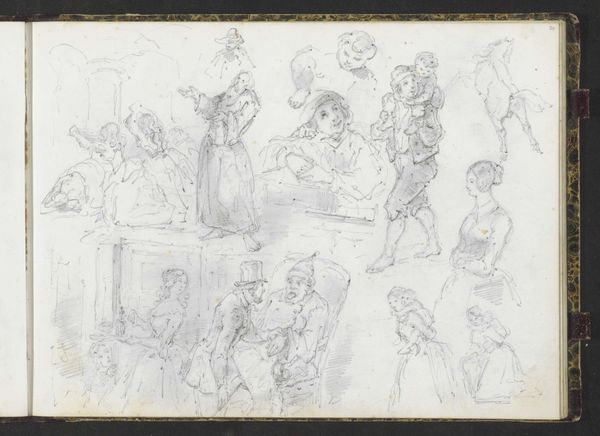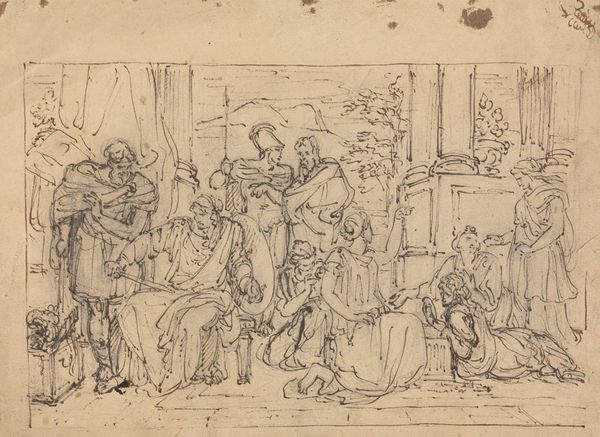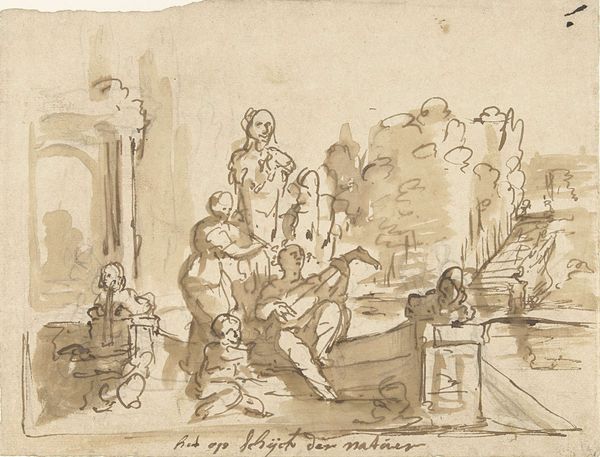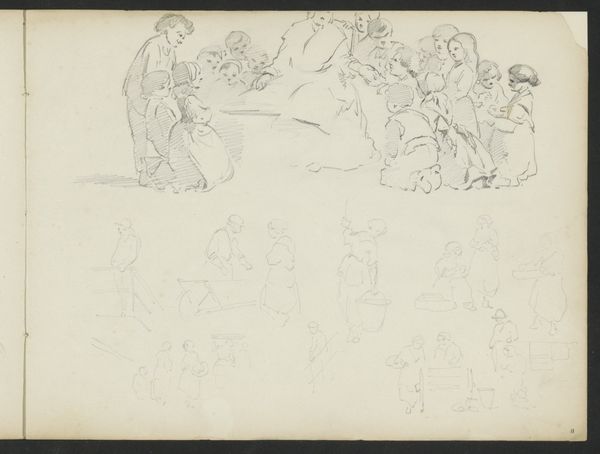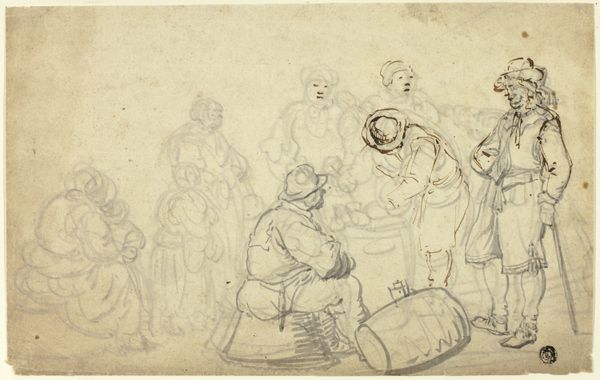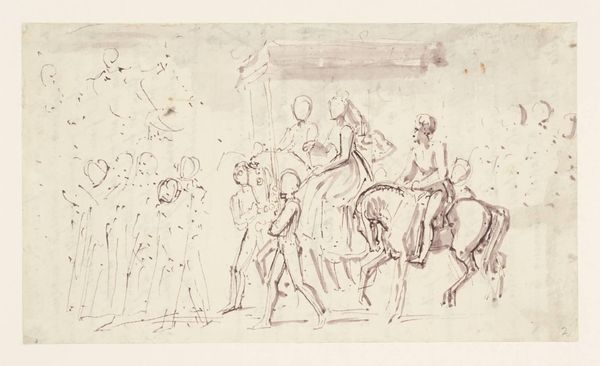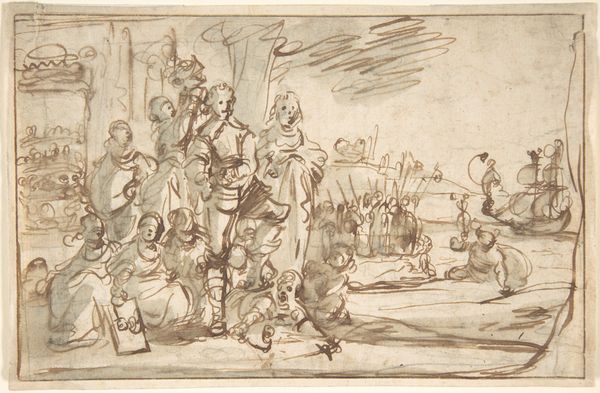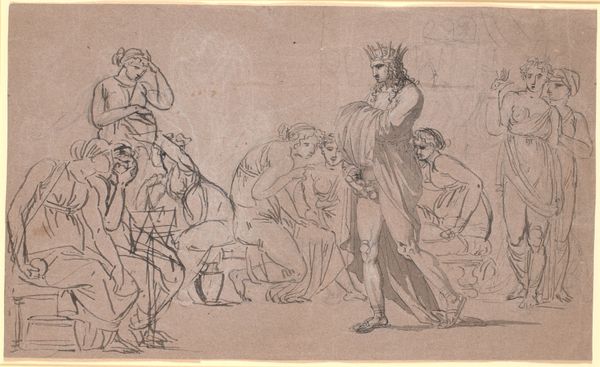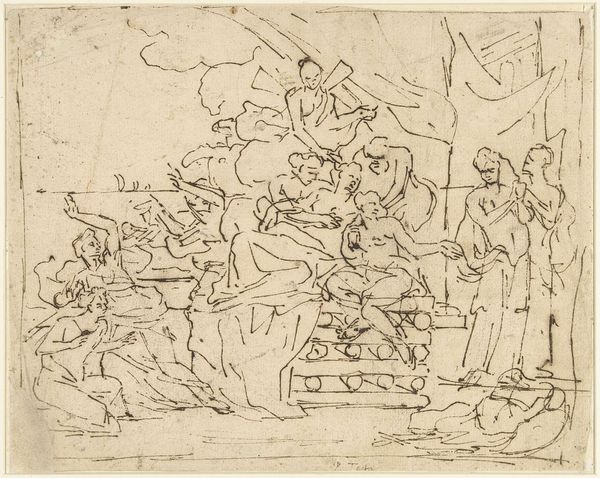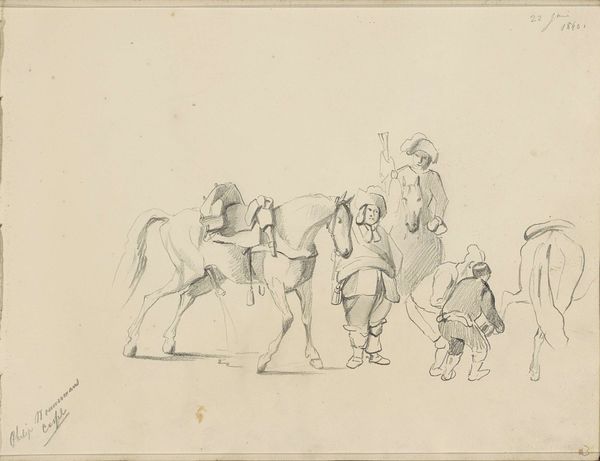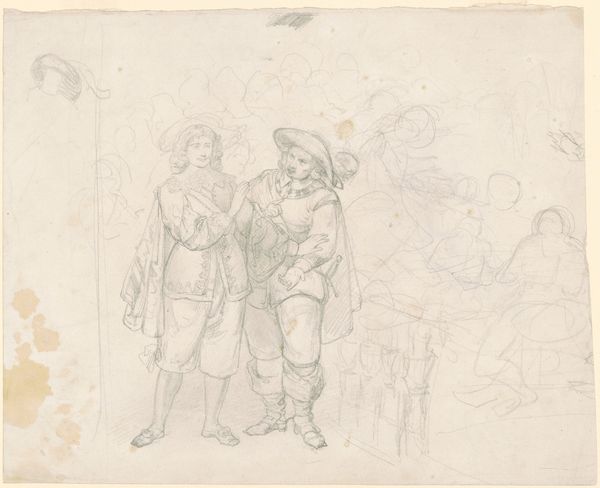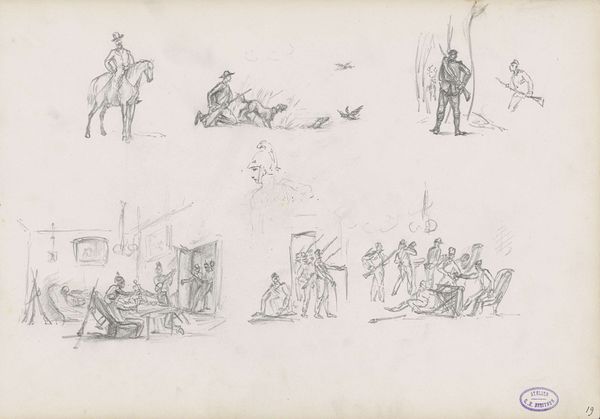
Forskellige udkast til en scene fra P.A. Heibergs skuespil "Chinafarene" 1790 - 1793
0:00
0:00
drawing, pencil
#
portrait
#
drawing
#
pencil sketch
#
pencil
#
history-painting
#
academic-art
Dimensions: 208 mm (height) x 311 mm (width) (bladmaal)
Curator: We’re looking at a sheet of pencil sketches by Jens Juel, dating from around 1790 to 1793, titled "Forskellige udkast til en scene fra P.A. Heibergs skuespil 'Chinafarerne'". It’s part of the collection at the SMK, the National Gallery of Denmark. Editor: My immediate impression is of delicate fragility. The figures are rendered with such light, ephemeral lines, it's as though they might dissolve before our eyes. It feels fleeting and ethereal. Curator: Indeed. The quick, sketchy quality evokes a sense of process, of ideas forming on the page. The groupings of figures are interesting; they suggest multiple iterations of a single scene. The play, "Chinafarerne," or "The China Craze," was a satire of the Danish East India Company and the craze for Chinese goods. The figures, while lightly sketched, clearly represent people of status, dressed in finery. Editor: It’s intriguing to consider the materials at play. Graphite pencil on paper, readily available even then, allowing for quick studies. I wonder about the quality of the paper; it seems quite smooth, enabling those fine, elegant lines. What social commentary can we draw about this scene, from these images? Are there class relations that may provide clues to who controlled these materials and their means of exchange in Danish society? Curator: Well, the play was indeed a commentary on consumerism and social climbing, reflecting anxieties about trade and its impact on Danish society. Notice how even in these sketches, Juel meticulously captures the details of their dress— the elaborate hairstyles, the draping of the gowns—suggesting an obsession with surface appearances, with things that dazzle and shine like china itself. I do wonder how Juel balanced representing real class division, yet in an artistic endeavor meant for display in an exclusive milieu. Editor: I appreciate how this sketch allows us a glimpse into the artist's creative process and the theatrical culture of the time. Considering how globalism was burgeoning through mercantile trade with companies like the Danish East India company, what meanings may the sketch symbolize about access to international cultural power? I keep looking back at what appears like serving vessels and how this theme about consumption persists throughout the various tableaus sketched out. Curator: Absolutely. The symbols within the images are revealing: the fine porcelain itself represented more than just a luxury item, but an intersection between taste, capital, and the projection of oneself through fashion and art. It reminds us how interconnected those things were in that period. Editor: Looking closer, this image gives a unique entrypoint to examine the means, materials, and meanings behind it. From those light graphite strokes on seemingly expensive drawing paper, we've gained insight into art creation as both a political and creative act.
Comments
No comments
Be the first to comment and join the conversation on the ultimate creative platform.
